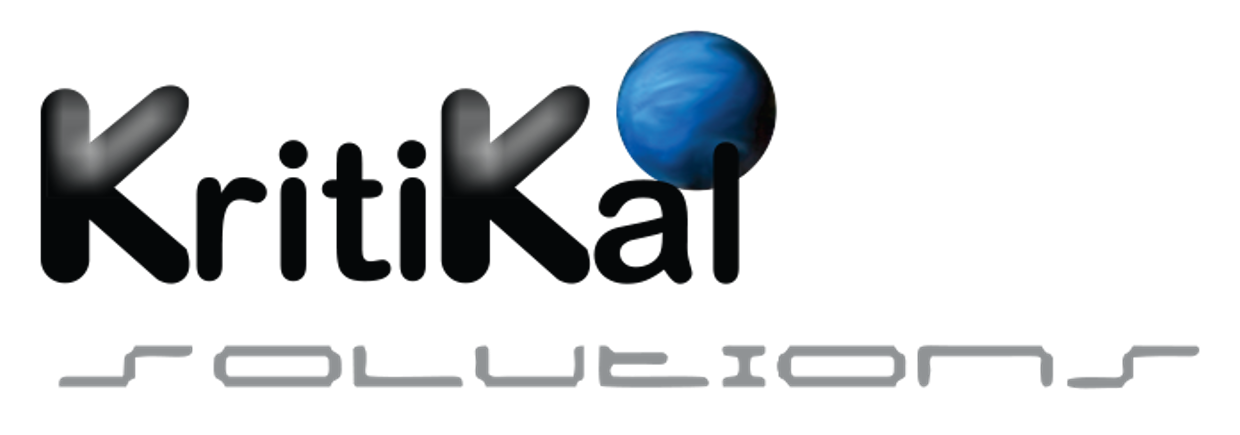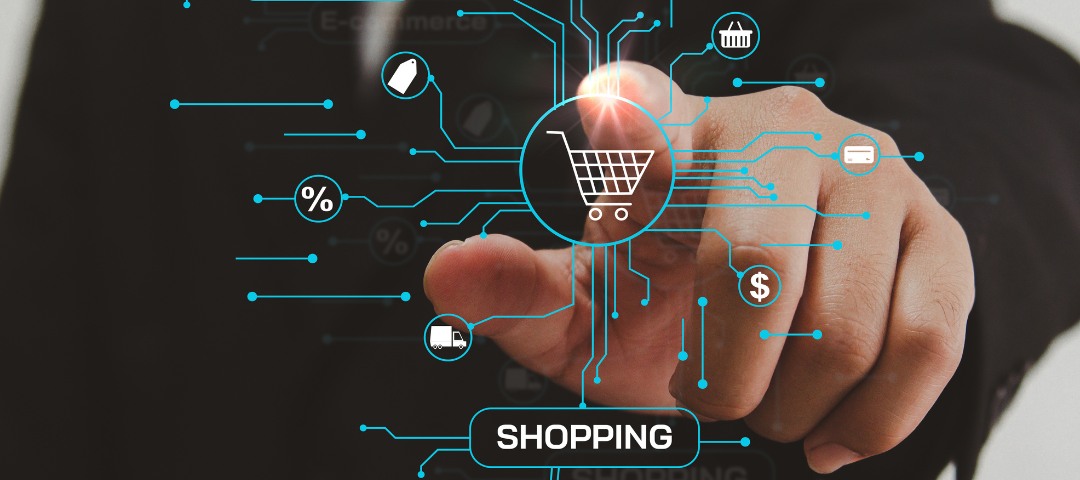In the contemporary market scenario, more and more companies are entering the retail field with disruptive technologies to engage customers. Computer Vision (CV) and its applications are finding their way into every retail store and e-commerce company, such as to manage inventory and meet customer demands. With computer vision growing in the retail sector, it is evident that this industry is undergoing revolutionization, where retailers are able to gain customer insights, minimize operational costs and even increase customer loyalty through better in-store experience.
Advancements in the computer vision field may apply to retail stores of all types, sub-industries and sizes in the near future, right from brick-and-mortar stores, fashion stores, wholesale shops, grocery retail, personal care stores to electronics stores and more. It has been forecasted that the global retail digital transformation market is likely to reach a value of USD 1.72 trillion by 2028, from its previous value of USD 0.71 trillion in 2023, surging rapidly at a CAGR of 19.3% during the forecast period of 2031-2028. [Mordor Intelligence]

Applications of Computer Vision in Retail
Computer vision aids physical retail stores in keeping up their performance in the competitive market that is largely data-driven. This technology falls under the larger umbrella of AI, and enables machines to interpret visual data and draw analytical conclusions. Moving forward, we will be looking at some of the ways in which computer vision has been transforming the future of retail:
Improved Store Layout
Computer vision and its applications can be used to improve customer experience in retail by analyzing success rates of multiple store layouts in terms of product sales values and customer sentiment and behavior analysis during the acts of choosing product lines and purchasing. It helps retailers realize the required layout of product lines that need to be placed in the requisite positions, so as to be easily found and sold and even cross-sold or up-sold, thus, showcasing customer demographics with respect to age, gender and expressions, for devising further marketing strategies. The computer vision powered cameras detect and report shelves that are usually noticed to be empty by customers but not missed out, that is customers were unable to find the products they were looking for. Such shelves can be filled with required product categories. Also, sometimes, height at which products are placed may lead to low shelf-level offtakes. Such situations can be analyzed and measures can be taken to improve engagement.
For example, via retail product solutions such as product engagement analysis, retailers can receive tips for showcasing a mini point-of-sales stand for products such as pocket perfumes, mini snack packets etc., near the cashier counter, ice cream freezers near the dairy products, displayed in the column refrigerators, or even salsa dip type of products placed near nachos packets display, can ease the purchase process for the customer and increase sales and subsequent ROI for retailers. They can gain accurate and real-time insights on products and logos that customers recognize and interact the most with (hot shelves, aisles and zones) as well as the abandoned ones. With such information, retailers can optimize product placements, store-in-store spaces, promotions and in-store purchasing processes.

Self-Checkout Facility
Automated self-checkout systems are being adopted as prominent retail store solutions across the globe. This is because these allow customers to easily pay for the items without having to wait in queues, for the shopping cart or self-checkout kiosk automatically captures, analyzes and summates the total amount of the items picked and placed in the cart or the kiosk space. These kiosks also recommend products intuitively, that may intrigue customers before the final transaction, or during scan and analysis. Thereby, increasing sales and ROI in a manner that is similar to the aforementioned point-of-sales strategy.
Moreover, computer vision and deep learning tech aids in footfall analysis that utilizes deep learning for tracking customer pathways via heatmaps and spaghetti diagrams, for ease of movement and checkout. It can recognize if the self-checkout kiosks or service desks are empty, if there is any unusual waiting time at the kiosks and if the number of kiosks needs to be increased. Then staff can be alerted and can assist customers in moving to other self-checkout counters, in order to avoid crowding.
In-Store Analytics
Many-a-times, cameras installed in the retail stores are equipped with 3D sensors and lidars for detecting footfall, loyal customers via database, dwell times as well as people counting. The issues in this case are that sensors require special hardware setup, may not be agnostic or compatible in nature with all computer visualization, need to be placed at certain heights etc. in case of time-of-flight sensors, may be inflexible and not powerful enough for analytics and involve a lot of sunk costs during installation as well as for maintenance. On the contrary, computer vision pipeline allows AI and deep learning based video analytics using machine learning algorithms after being seamlessly integrated with CCTV or surveillance cameras.
With cameras equipped with computer vision technology that are capable of detecting, monitoring and localizing carts in real-time, retailers can make sure that shopping baskets and carts are available for visitors all across the store. These also detect crowd metrics and queue length for predicting approximate waiting time, and subsequent actions to be taken swiftly. Even the work hours and attentiveness of sales staff to sell to or help out customers to find product category aisles etc. can also be analyzed using CV technology. Also by analyzing average hours of visit by customers during the day, optimized staffing can be done and related planning decisions can be taken for better customer experience in retail stores.
Customer Behavior Analytics
Customers are the greatest assets to a retail business, and it is therefore rightly said that their perception is what becomes the reality of the stores. Computer vision and deep learning technology powered systems can efficiently detect people, their movements and overall customer journey through pose-estimation and real-time object (products and ads views) detection. These path analytics are similar to analyzing count of page visits and also cost-per-clicks on ads concept in e-commerce websites. Customer loyalty and preferences can be calculated through dwell time analysis, that is the total time a customer spends in the store, which also provides valuable marketing and operational insights. This also includes analysis and count of zero purchase shoppers.
Retail store solutions such as image classification in the areas of interests shown by the customers, followed by sentiment analysis helps retailers in improving their services by increasing the quantity of preferred products in regions of interest and analyzing basket filling levels for determining the required number of baskets and trolleys in addition to effectiveness of hassle-free self-checkout systems. Visitor profiling and demographic analytics involve classifying customers into certain groups on the basis of age, expressions, activity, gender, ethnicity, etc., with the help of deep learning algorithms. This data can be stored for increasing sales, loyalty programs etc.

Inventory Management
CV based cameras can be used for backroom and inventory management, per say, to identify products, pallets, boxes and so on. These can be used to predict accurately and alert retailers whenever certain products are about to run out-of-stock and for how much duration. Here, computer vision can also play an important role via Optical Character Recognition (OCR) technique, where cameras can read products, packages, containers and shelves’ labels, product codes such as quick response codes or barcodes. Post this, these names can be automatically filled in the store’s computer systems integrated with inventory management softwares like SAP, Oracle Fusion Cloud etc., with the help of captured image enhancement and data extraction using Intelligent Document Processing (IDP) as well as automated data filling into inventory sheets using Robotic Process Automation (RPA). In case of misplacement of any objects in the warehouse or backroom, AI vision can be used to detect them and alert the supervisors.
Security and Compliance
Automated inspection by using computer vision can help ensure that fire extinguishers and safety gear are present in every floor of large retail complexes. Retailers can make sure that no obstacles are placed near emergency exits at all times through alerts by these specialized cameras. AI based monitoring is used for assuring that all safety guidelines and standard operating procedures are followed consistently, for example, with the help of machine learning algorithms, alerts around temperature and pressure thresholds can be provided by reading analog controls. It is also used to continuously monitor if branding policies are adhered to, such as brandwise POS standards and distribution of promotional material. A great advantage of integrating these cameras is that they automatically predict, detect and alert all personnel regarding dangerous occurrences such as narrow aisles and defective racks.
Retail video analytics can detect intrusion or any kind of suspicious activity in the store during closed hours and alert the required personnel. Computer vision powered cameras are also capable of detecting shoplifting activities, unauthorized access into restricted areas such as behind-the-counters etc., as well as providing real-time alerts. Another major application of computer vision powered cameras is facial recognition for authentication purposes and entry into in-staff only spaces. This can be used to capture as well as identify facial signatures and characteristics of employees with respect to the retail store’s database. In addition to this feature, it can be assured if they are wearing staff uniform, masks and following COVID-19 precautions at all times. These can detect and prevent thefts in loading docks where goods may be stored. In addition to these, features like detection of shop floor obstacles and cleanliness, spill detection as well as parking lot analysis can be done using computer vision based cameras.
Leverage the Power of CV with Us
KritiKal is a leading Computer Vision services company with extensive experience in the field of Computer Vision. We can develop softwares integrated with computer vision capabilities such as shopping cart tracking, inventory management, self-checkout billing management, complete store security, retail IT solutions and management, bulk order booking and logistics management, e-commerce modules, push notifications, intelligent 3D store simulation and analytics, digital retailing, order history and loyalty rewards tracking etc. in an agnostic Android / iOS application form or desktop software integrated with your existing billing or inventory management software as per your requirement.
We provide you a complete solution with numerous salient features such as customer density tracking and heat mapping, shelf-replenishment, planogram compliance, smart energy monitoring, image annotation of products, targeted ad placement and AdView analytics, customer behavior analysis, in-store queue management and much more.
Conclusion
With Computer Vision, retailers can gain the potential to revolutionize their overall customer experience in retail stores alongside other benefits such as cost-optimized operational efficiency and a fair competitive edge in the market. They can in a way interact with their customers by catering to their needs through thorough and precise CV based analytics. Join hands with KritiKal and leverage our custom computer vision services for retail businesses. Please call us or mail us at sales@kritikalsolutions.com to avail our services.

Phool Preet holds the position of Senior Architect at KritiKal Solutions. Along with an M.Tech in Computer Science Engineering from IIT Delhi, he has over 12 years of experience in the field of Computer Vision, Machine Learning and Artificial Intelligence. He has been a part of various crucial projects and has helped KritiKal in successfully steering through these deliveries.

 Global
Global  United States
United States 